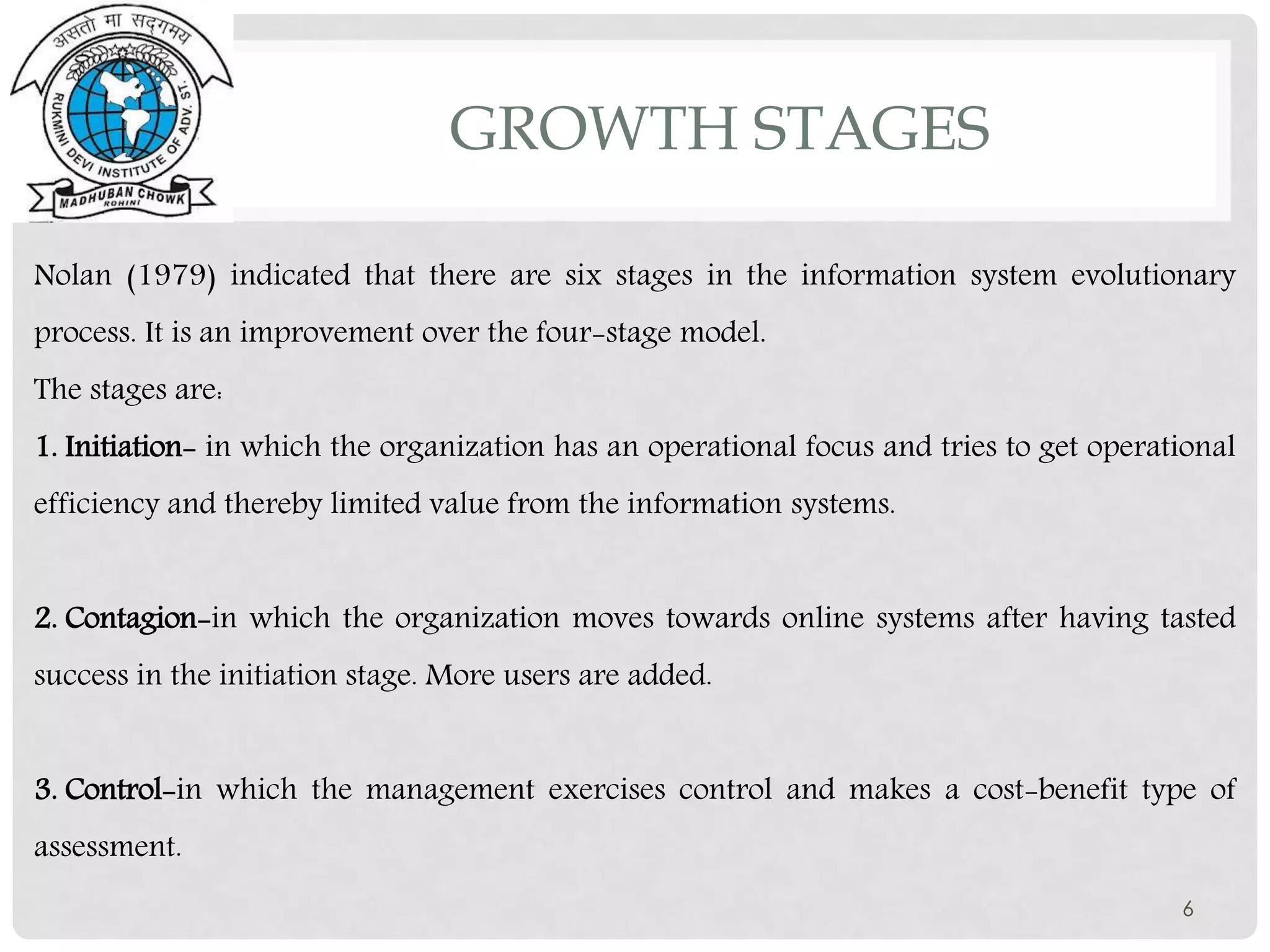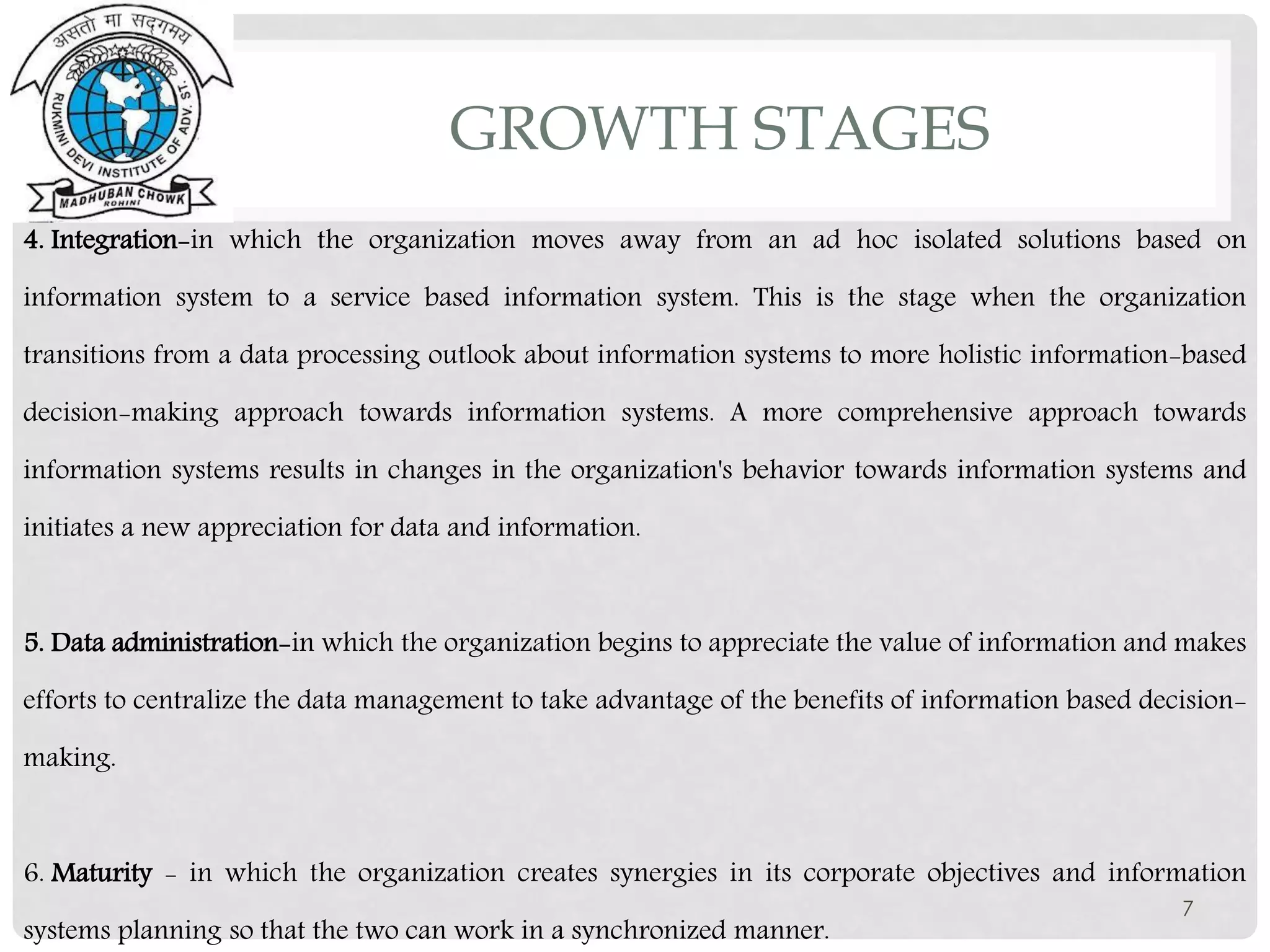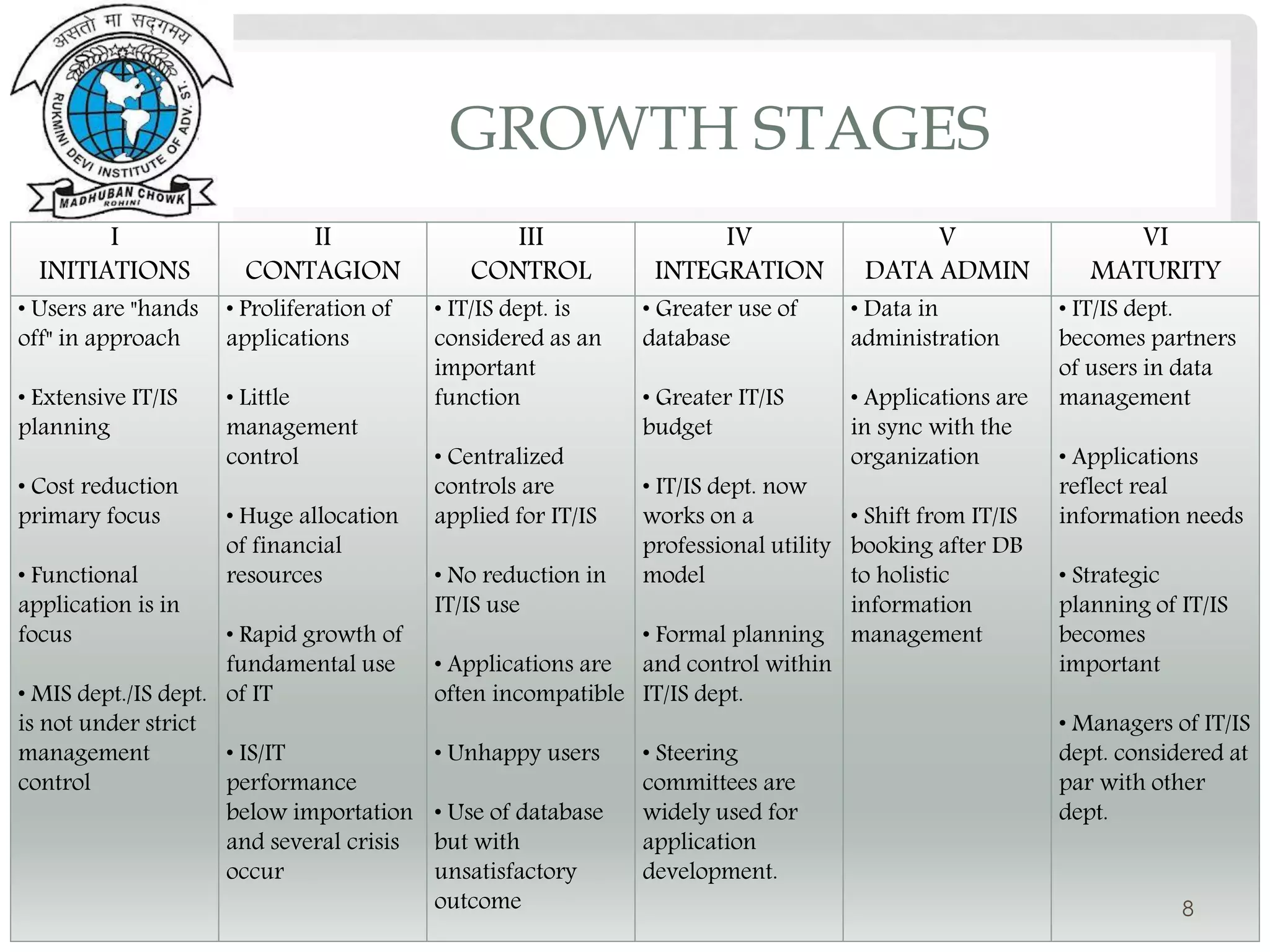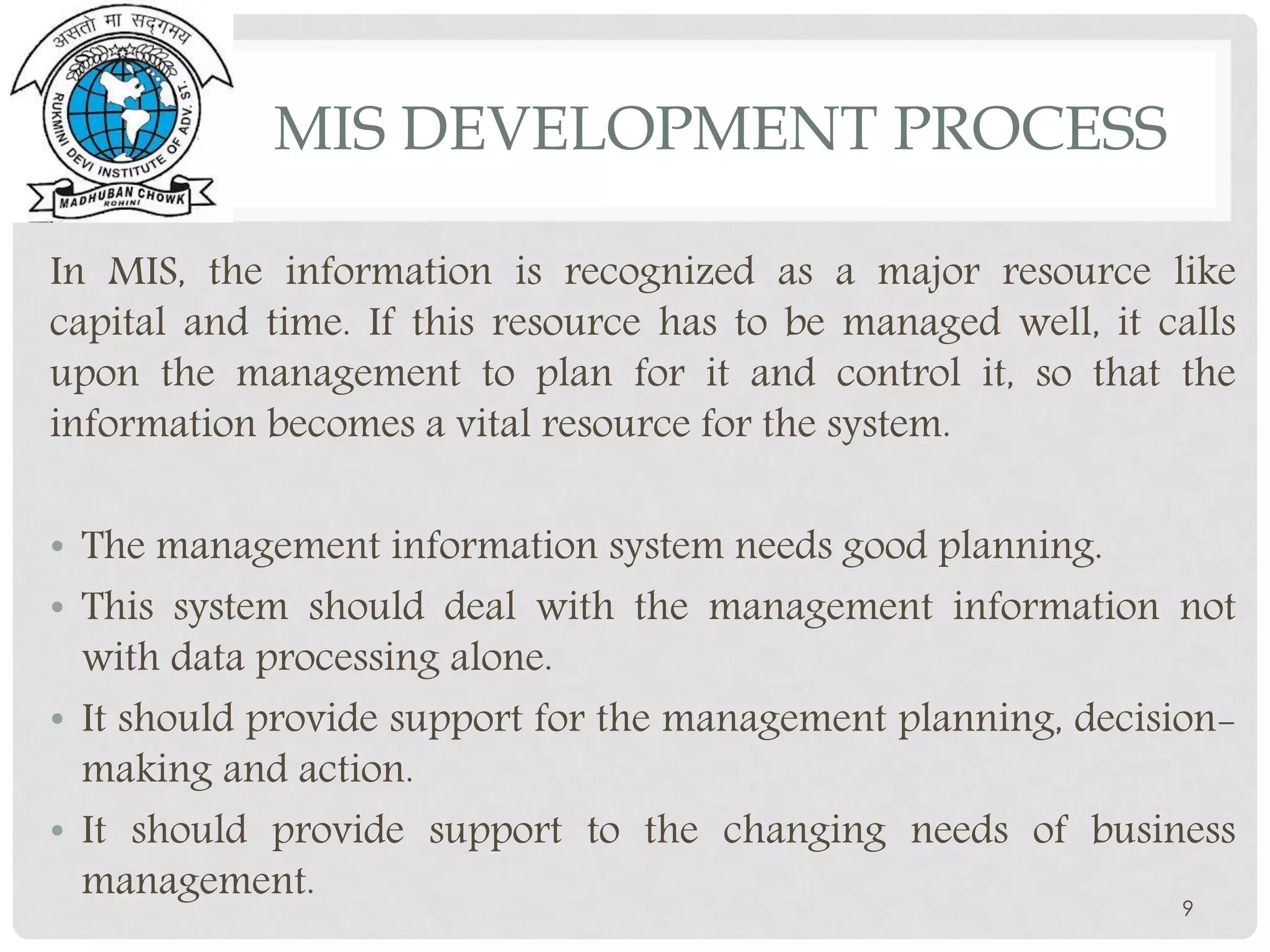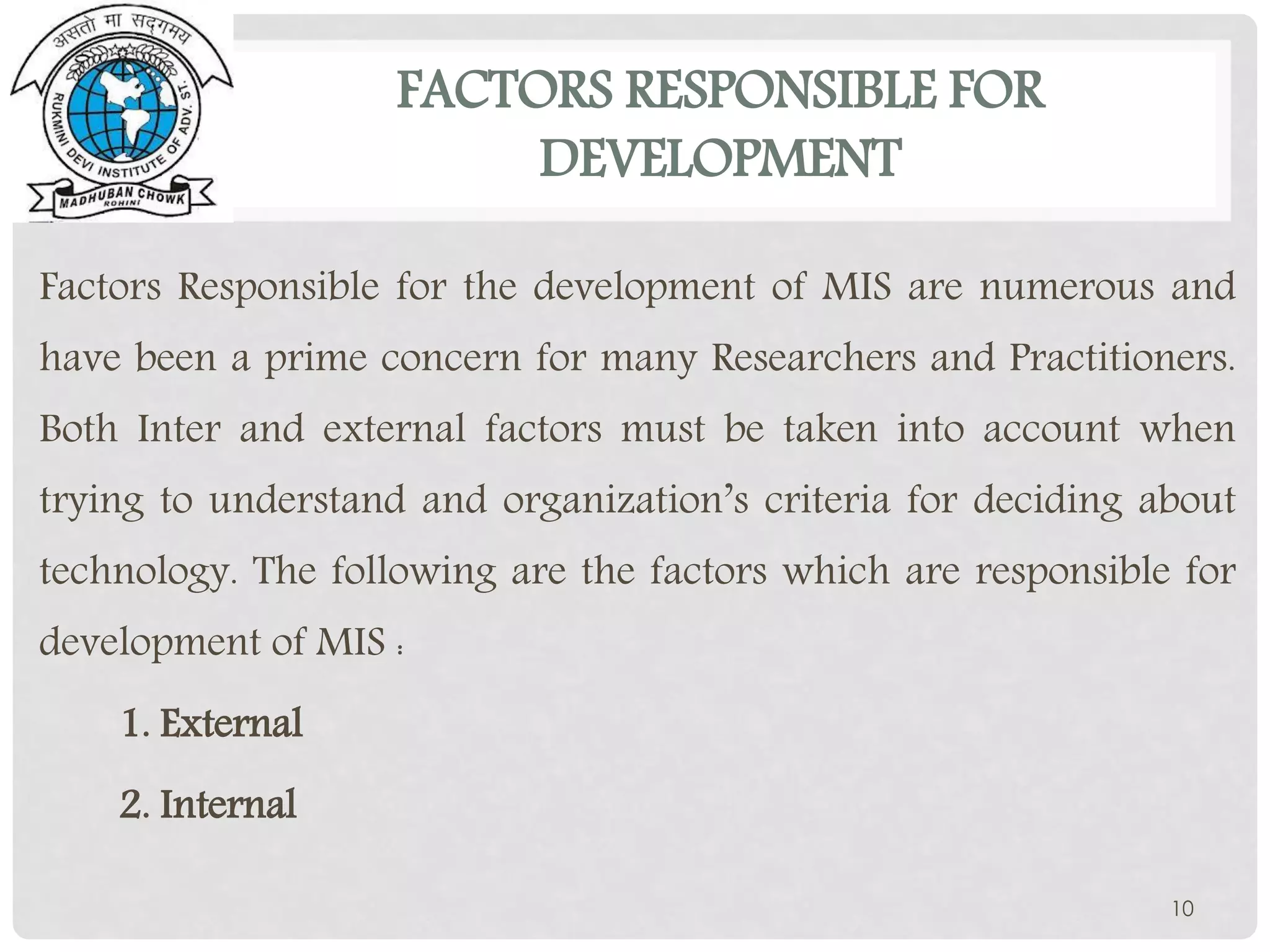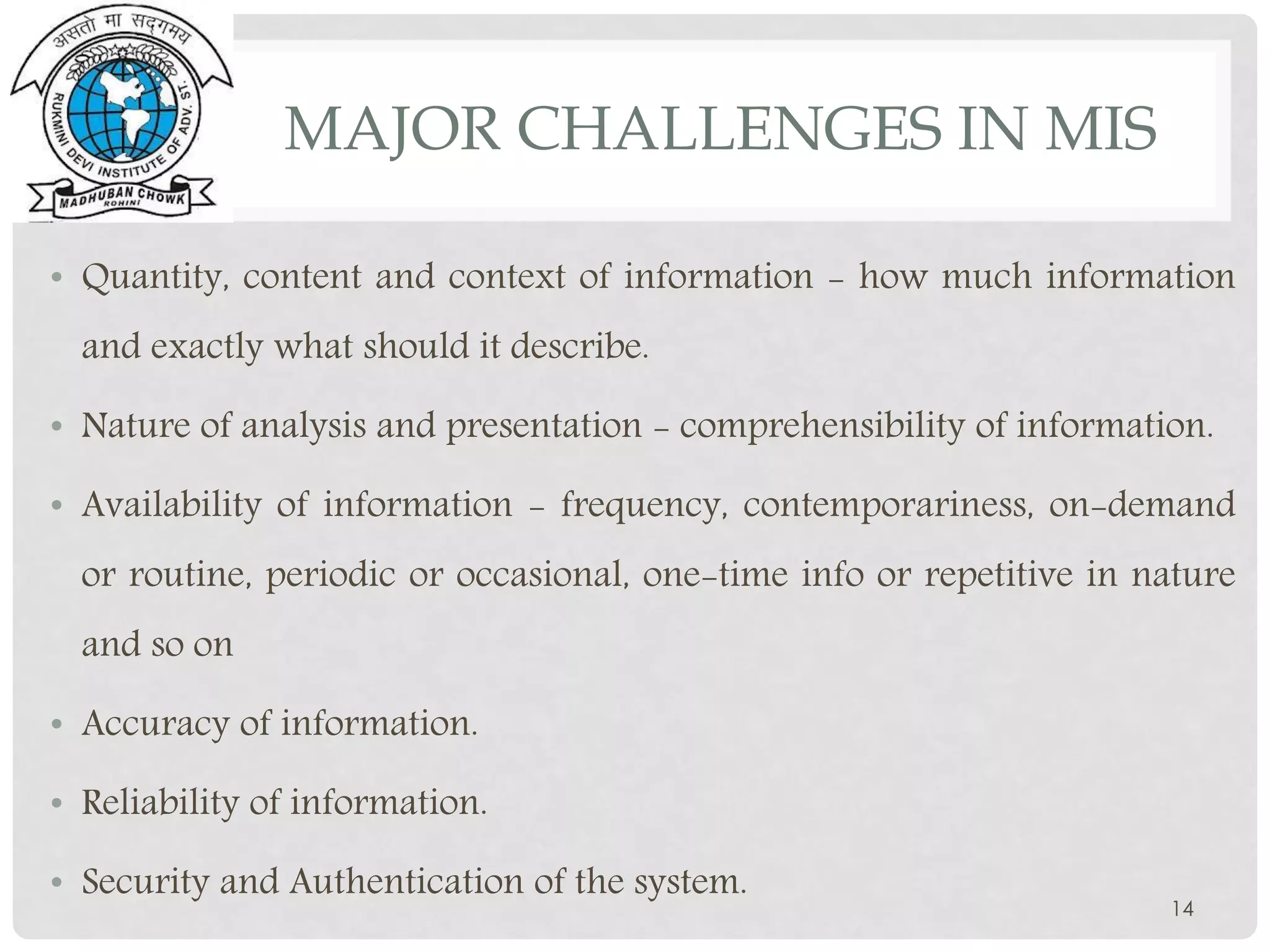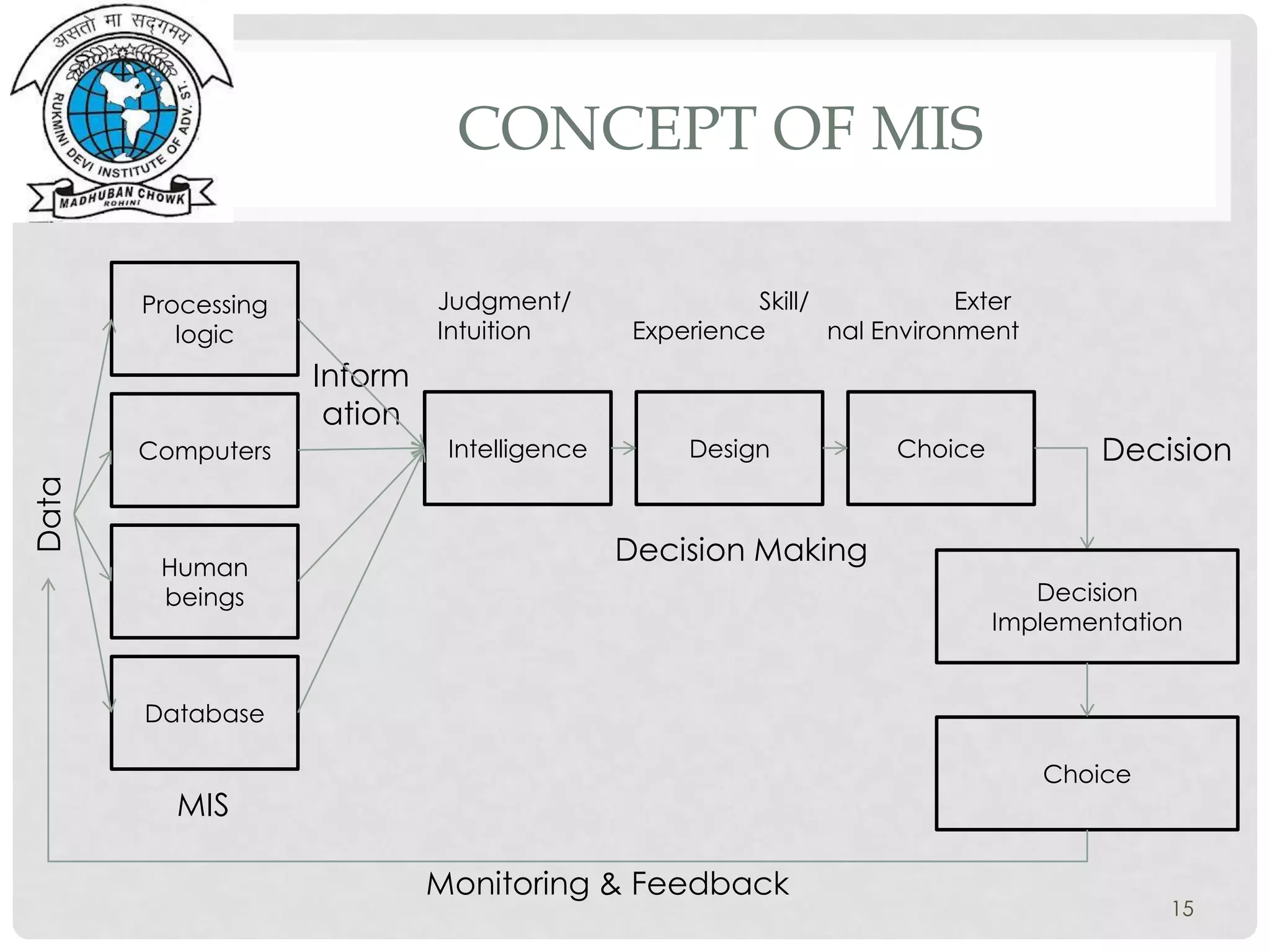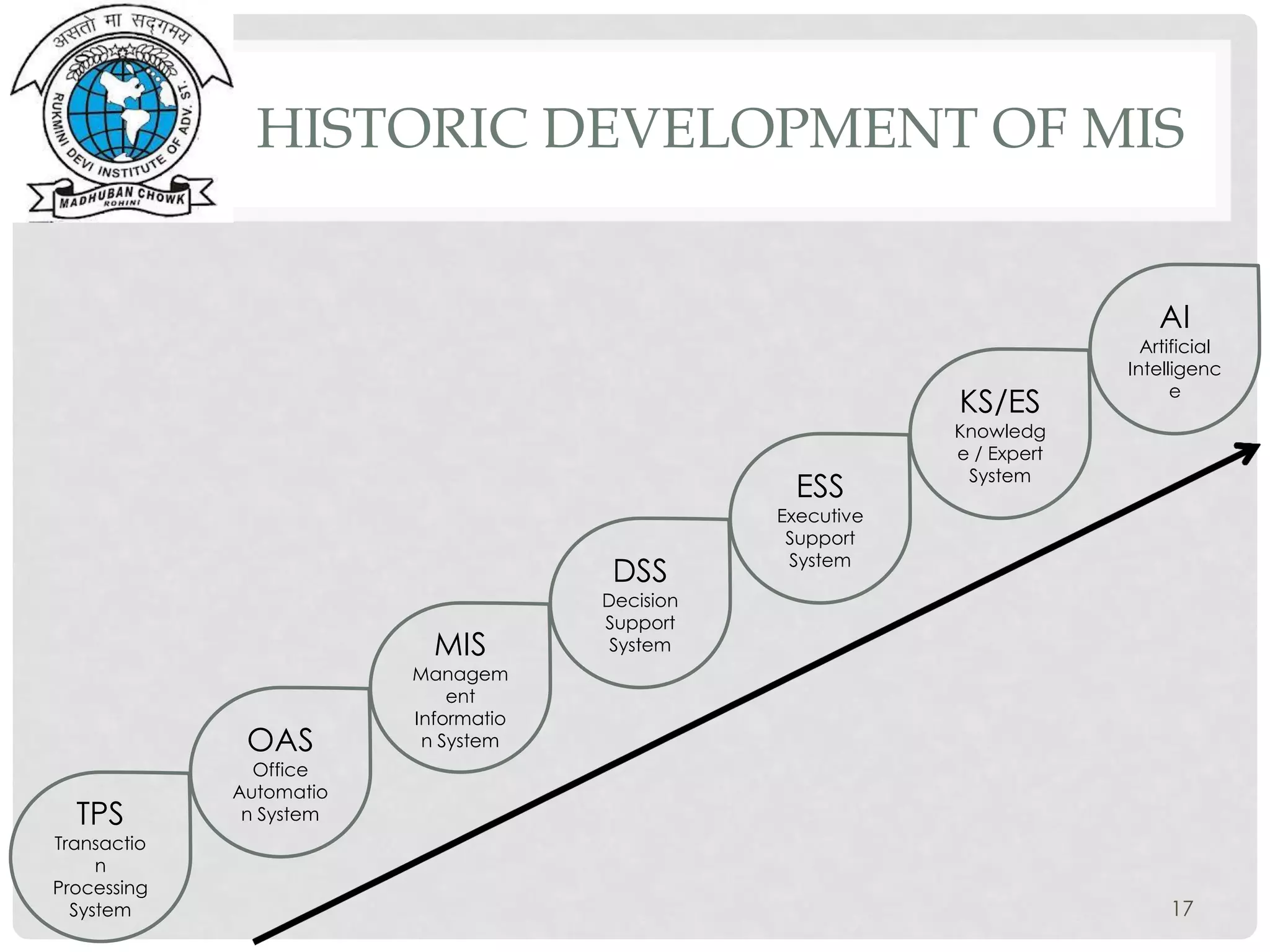The document discusses the growth and development of management information systems (MIS). It describes a six stage model of MIS growth in organizations proposed by Nolan, from the initial initiation stage to a final maturity stage. Key factors responsible for MIS development are also outlined, including external factors like industry trends and internal factors such as organizational characteristics and strategy. Major challenges for MIS include issues around information quantity, analysis, availability, accuracy, and security. The concepts of MIS are defined as integrating computers, databases, decision-making, and the external environment. Finally, the historical development of MIS is reviewed from early transaction processing systems to modern knowledge and decision support systems.





